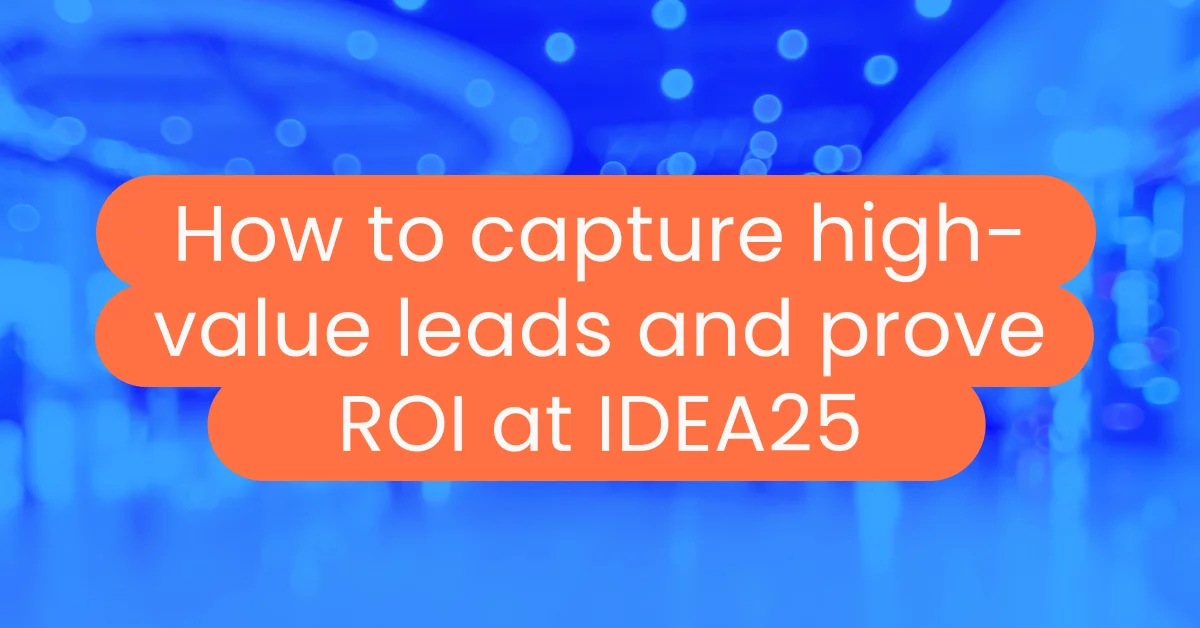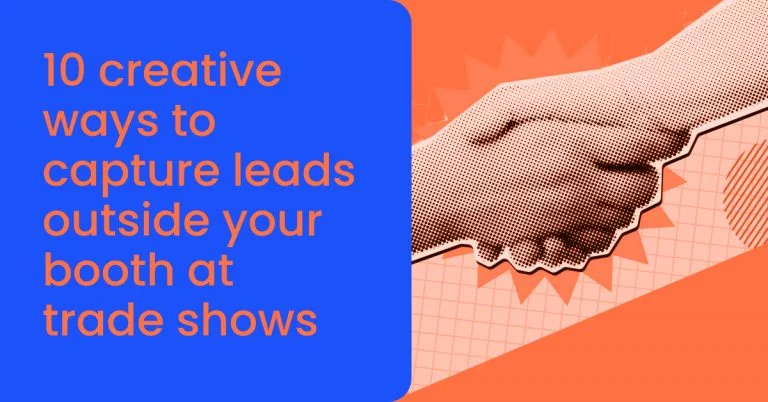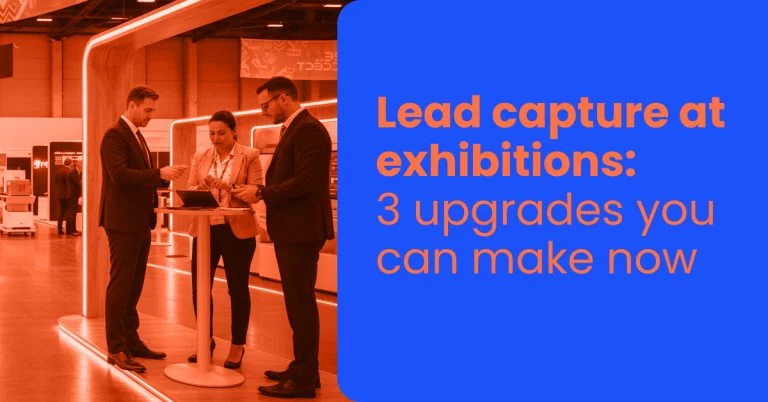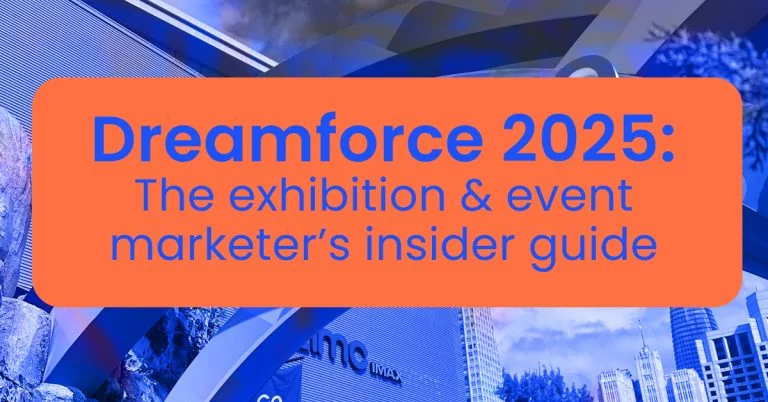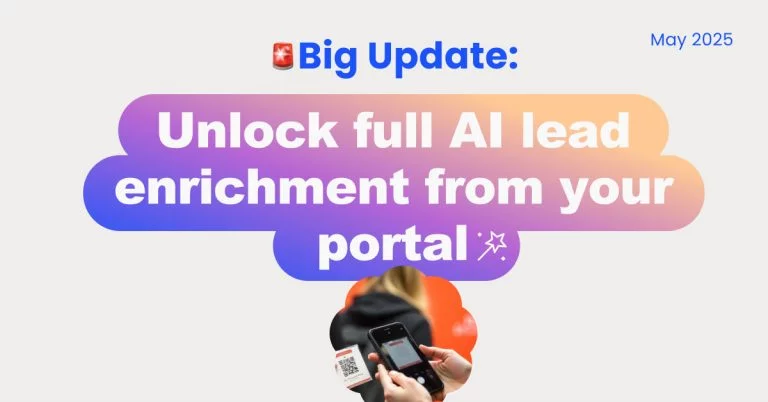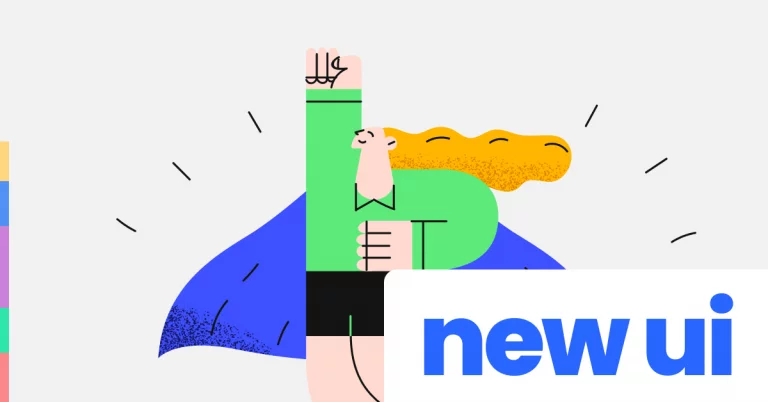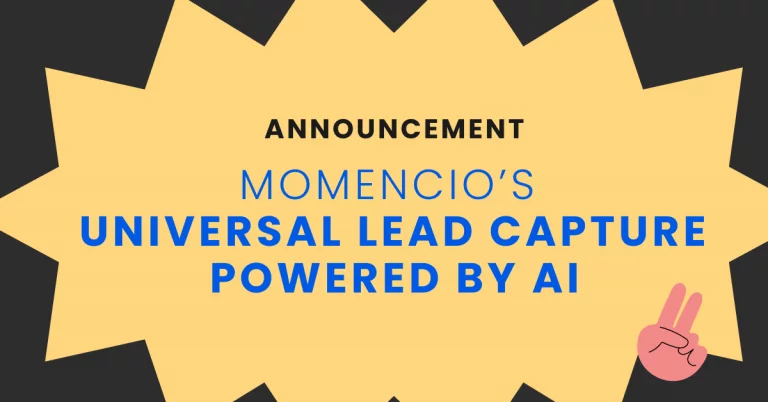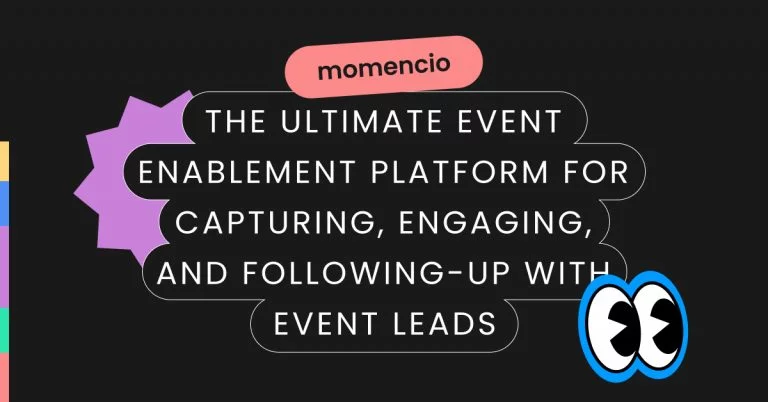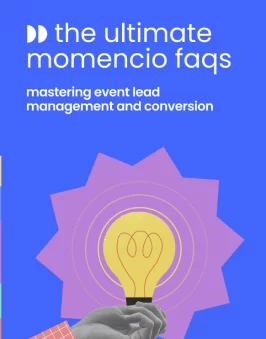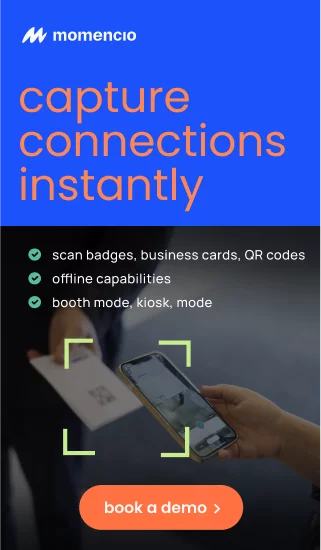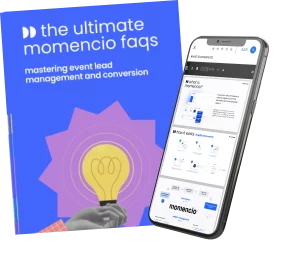TL;DR: How to maximize lead ROI at IDEA25
IDEA 2025 is more than a showcase of innovation in nonwoven fabrics—it’s a goldmine of sales opportunities. But most companies leave leads (and revenue) on the show floor by relying on outdated capture tools, delayed follow-ups, and disconnected workflows.
This article breaks down a smarter, conversion-ready approach to trade show success:
- Ditch badge scans for enriched, real-time lead capture
You need more than names—you need context. Track booth interactions, content views, and interest levels as they happen.
- Engage in real time and personalize instantly
Real-time tracking helps you prioritize hot leads, trigger tailored content, and follow up while attendees are still on-site.
- Follow up within hours, not weeks
Generic post-event emails are a waste. Use automated, personalized follow-ups with branded microsites to stay top-of-mind.
- Integrate with your CRM for seamless handoffs
No more spreadsheets. Ensure every lead flows directly into your CRM with full engagement history and segmentation.
- Measure what matters and prove ROI
Track metrics like lead conversion, sales velocity, and pipeline attribution—not just booth traffic or badge counts.
- Build a full-funnel strategy
From pre-show outreach to post-event re-engagement, treat your booth as a revenue engine—not just a marketing channel.
If you’re serious about turning IDEA25 into a real growth opportunity, tools like momencio help you automate, personalize, and scale your event marketing like never before.
Introduction
The best event marketing teams don’t just collect leads—they convert them. Yet for many B2B organizations in industrial sectors like engineered fabrics, converting trade show engagement into real revenue is still a mystery.
At high-investment events like IDEA25, where thousands of technical buyers and innovators converge in Miami Beach, the stakes are too high for guesswork. You only get one shot to make an impression, capture the right leads, and follow up effectively—before your competition does.
Here’s the kicker: 79% of trade show leads are never followed up on—or are followed up on too late to matter. That’s a staggering waste of booth investment, staff energy, and marketing potential.
And it’s not just about speed. Personalized follow-ups convert 3X more leads than generic batch emails. Yet most post-event outreach still feels like a copy-paste afterthought.
So how can exhibitors at IDEA® 2025 stand out, especially when their audience is deeply technical and often skeptical of salesy tactics?
This guide dives deep into how forward-thinking teams are transforming their nonwoven fabrics expo playbooks—from smarter lead capture to CRM-synced workflows and behavior-based follow-up. You’ll walk away with actionable strategies to:
- Prioritize high-intent leads in real time
- Personalize outreach at scale
- Prove event ROI to leadership
- Integrate event data with your sales systems
- Turn your booth into a real pipeline accelerator
Let’s break it down—starting with why traditional trade show tactics just don’t cut it anymore.
Why the nonwoven industry needs better event ROI strategies
The nonwoven industry is no stranger to innovation. From advanced filtration materials to sustainable hygiene solutions, it’s constantly pushing boundaries. But when it comes to event ROI strategy, many exhibitors at major expos like IDEA® 2025 are still stuck using outdated methods that don’t reflect the sophistication of their products—or their prospects.
Let’s get real: traditional trade show tactics like collecting business cards, renting generic lead scanners, or doing mass email blasts post-event just don’t deliver the insight or conversion impact today’s sales and marketing teams need. In a sector where procurement cycles are long and technical knowledge is deep, random touchpoints rarely lead to revenue.
The ROI problem no one wants to talk about
Only 6% of exhibitors rate their lead conversion from trade shows as “very effective.” That’s a brutal number when you consider the average cost of exhibiting at a global show like IDEA25—which can easily top six figures once you include booth build, travel, and staffing.
What’s worse? Many companies struggle to even measure ROI accurately. They know how many scans they got, but not:
- Who actually engaged with content at the booth
- Which interactions were relevant to their product lines
- How quickly (or if) leads were followed up with
- Whether leads were ever added to a pipeline
Why this matters more at IDEA®
IDEA® isn’t just another industry meetup. It’s a high-value, high-density technical expo. The people walking the floor are engineers, sourcing specialists, and innovation leaders who are making big-budget decisions. When you miss an opportunity to engage meaningfully, you’re not just losing a name—you’re losing a six- or seven-figure deal.
That’s why more teams are shifting toward intelligent lead workflows designed for:
- Real-time insight into booth engagement
- Automated, personalized follow-up while the event’s still hot
- CRM-ready lead enrichment that plugs into their sales systems
- Strategic content delivery tailored to product interest and buying stage
Events are evolving—but strategies aren’t
Here’s the disconnect: the industry is innovating its materials, machinery, and manufacturing processes—but not always its marketing. Your company might have biopolymer breakthroughs on display at IDEA®, but if your lead capture strategy still involves fishbowls or basic badge scans, your buyer journey is broken before it begins.
What’s needed is an event marketing transformation to match the complexity and precision of the nonwovens industry. That means more than just tech. It means:
- Aligning sales and marketing on pre-set engagement goals
- Using data to track which demos, decks, or videos are actually converting
- Capturing lead context in real time—not weeks later
- Following up before your competitors even leave the venue
Because let’s face it—it’s not about how many leads you collect. It’s about how many leads you convert.
Trade show lead capture: Why quality beats quantity every time
Picture this: Your booth at IDEA® 2025 is buzzing. You’ve got curious engineers, innovation scouts, and R&D execs stopping by. Scanners are beeping. Badges are being zapped left and right. Feels productive, right?
Not so fast.
Because here’s the catch: badge scans ≠ real leads.
In today’s B2B landscape—especially in complex industries like engineered and nonwoven fabrics—it’s no longer about how many leads you collect. It’s about what you actually know about them, how fast you can act on that knowledge, and whether or not you can tie it to revenue outcomes.
The problem with legacy lead capture methods
Let’s call it out: most exhibitors still rely on badge scanners, paper forms, or ad hoc tools provided by event organizers. These methods give you:
- A name
- An email (maybe)
- A company name
- A vague timestamp
What they don’t give you is:
- What products the visitor was interested in
- What documents or assets they interacted with
- Whether they’re a decision-maker or just browsing
- How engaged they were at your booth
- What triggered their visit (marketing? word of mouth? competitor curiosity?)
You’re essentially collecting anonymous data and trying to guess your way into a sales strategy.
That’s not just inefficient—it’s expensive. According to Exhibitor Magazine, the average cost per trade show lead is $811. Multiply that by hundreds of low-quality contacts, and you’re burning serious budget on people who might’ve only stopped by for the free mints.
Why quality matters more in technical expos like IDEA®
Here’s the unique twist with IDEA® 2025: the attendees are not your average conference-goers. They’re often:
- Engineers who can make or break vendor partnerships
- Product developers seeking niche material specs
- Procurement managers looking for long-term supply chain fits
These aren’t people who fill out forms casually. They have real intent—but only if you can catch it, understand it, and respond to it.
So if your team can’t capture the context around their visit, you’re missing a golden opportunity.
A better way: Context-rich lead capture tools
What modern event teams are doing differently is leveraging event tech platforms that:
- Capture real-time interaction data (who watched what video, opened what brochure, asked about which product)
- Tie those insights directly to individual lead records
- Score those leads based on engagement intensity and content relevance
- Enable on-the-spot notes and interest tagging by booth staff
- Trigger automated, personalized follow-up—while the event is still happening
This shifts your event from being a passive lead gen exercise to a data-driven sales enablement engine.
Example: Let’s say someone scans into your booth…
Instead of just grabbing their email, your team knows:
- They spent 3 minutes watching your demo on meltblown filtration media
- They downloaded your spec sheet on biodegradable nonwovens
- They asked your rep about FDA compliance
- They came back a second time with a colleague
Now imagine your sales team getting that full lead profile—complete with suggested next steps—in your CRM the moment the event ends. That’s not just a “lead.” That’s a qualified sales opportunity.
Align capture with CRM from day one
Another major pitfall? Waiting until “after the show” to clean, sort, and upload leads into your CRM. At that point, your hottest leads are already talking to competitors who moved faster.
That’s why more teams are integrating capture tools that:
- Sync directly into Salesforce, HubSpot, or other CRMs
- Allow sales reps to access enriched lead profiles immediately
- Enable real-time lead routing and scoring
No spreadsheets. No guessing. Just qualified leads in your pipeline—fast.
Key takeaway:
Don’t just scan. Strategize.
Every lead you collect at IDEA® should come with context, intent, and next steps. Because in technical industries, a single well-qualified lead is worth more than 100 cold badge scans.
Real-time engagement: The secret weapon your booth is missing
Booths don’t close deals—conversations do. But if you’re not tracking how visitors engage with your team, content, or brand in the moment, you’re leaving insight (and revenue) on the table.
At an innovation-heavy event like IDEA® 2025, real-time engagement isn’t a nice-to-have. It’s a critical edge. Your prospects are evaluating not just your product—they’re evaluating how well you get them. And the best way to prove that? Act on their interests the second they show them.
What is real-time engagement—really?
It’s more than badge scanning. It’s the ability to track and respond to prospect behavior as it happens, including:
- Which videos, brochures, or presentations they engage with
- How long they stay at specific product stations
- Which questions they ask your staff
- How many times they return to your booth
- Whether they access digital content via QR codes or touchscreens
With this data, you’re no longer guessing. You’re building context-rich lead profiles that fuel smarter sales conversations and hyper-personalized follow-ups.
And it all starts on the show floor.
From passive to predictive: How it works
Here’s how smart teams at events like IDEA® 2025 are building live insight loops:
- Visitor scans badge or business card
- Platform logs visit + time stamp
- Visitor interacts with booth content (PDFs, touchscreen demos, videos)
- Engagement is tracked and scored in real time
- Staff adds quick notes (e.g., “Interested in spunlace applications”)
- CRM profile is updated instantly
- Automated email with related resources is queued—before they leave your booth
This isn’t marketing magic. It’s applied behavioral data—delivered on-site, synced with your systems, and built for conversion.
Why this matters at IDEA® specifically
The audience at IDEA® 2025 is composed of hyper-specialized professionals. You can’t fake your way through a conversation about polymer bonding or sustainability compliance. They’re asking real questions—and your team needs to track those answers.
More importantly, you need to know:
- Who’s just browsing
- Who’s in active sourcing mode
- Who’s a decision-maker with a live budget
And you need to know it now, not two weeks from now when the trail’s gone cold.
The power of instant personalization
Let’s say someone downloads your datasheet on eco-friendly spunbond fibers and chats with your R&D lead about sourcing timelines. With real-time engagement tools:
- Their lead score spikes
- Your system flags them as “High Interest”
- A rep gets an instant mobile alert
- A follow-up email (with your ESG case study) is triggered within the hour
That’s how you move a lead from “just looking” to “ready for a quote”—before your competitors even realize they visited your booth.
What the best teams are doing differently
| Old Way | Smart Way |
| Badge scans + business cards | Live behavioral tracking + context |
| Manual follow-up spreadsheets | CRM-synced, real-time automation |
| One-size-fits-all emails | Personalized microsites + relevant assets |
| Sales waits 7–10 days | Sales acts same-day with prioritized leads |
And it’s working. Teams using real-time engagement tools report:
- 2–4x faster lead response times
- Over 3x higher email open rates
- Up to 40% increase in qualified lead conversion post-event
What to look for in a real-time engagement tool
To truly level up your event marketing game, look for tools that offer:
- Live engagement scoring and tracking
- Staff-triggered notes and interest tags
- On-the-spot email personalization
- CRM and marketing automation sync
- Digital content tracking (downloads, plays, shares)
Pro tip: Make sure it integrates with your existing CRM or MAP—real-time is useless if your systems can’t keep up.
Key takeaway:
You can’t optimize what you don’t track.
Real-time engagement turns your booth into a living, breathing sales funnel—one that works during the event, not just after it ends.
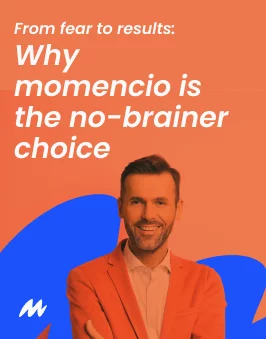
Post-show follow-up: Where deals are won or lost
IDEA® 2025 ends. Your team packs up. You’re exhausted. You fly home with a suitcase full of branded swag and a list of “hot leads” that’s… somewhere in someone’s inbox.
Sound familiar?
If you’re like most exhibitors, you just lost half your pipeline. Not because your booth was bad or your product wasn’t compelling—but because your follow-up wasn’t fast, relevant, or personalized.
Let’s fix that.
The brutal truth about trade show follow-ups
80% of leads generated at events are never followed up.
(Source: CEIR)
Of the ones that are, most receive a generic email 1–2 weeks later, long after the spark has faded.
By then, they’ve:
- Forgotten who you are
- Talked to your competitors
- Moved on to the next priority
If you’re relying on delayed, one-size-fits-all outreach, you’re not just late—you’re invisible.
Why fast + personalized follow-up works
According to InsideSales, leads followed up within 5 minutes are 21x more likely to convert than those followed up an hour later.
Think about that in the context of IDEA® 2025:
- Your target audience is in Miami for 2–3 days
- They’re having 50+ conversations
- Your team has a tiny window to make a lasting impression
By hitting them with a relevant, personalized follow-up within hours—not days—you take control of that window.
The anatomy of a perfect post-event follow-up
The best follow-ups aren’t “thanks for stopping by” emails. They’re smart, strategic, and full of value. Here’s what they include:
- Personalization
Address the attendee by name, reference what they saw, asked about, or downloaded. - Contextual content
Include a direct link to what they engaged with at the booth (product sheet, case study, demo replay, etc.). - Branded microsite or hub
Instead of attaching PDFs, deliver content via a mobile-friendly, branded microsite that tracks their continued engagement. - Clear CTA
Whether it’s scheduling a demo, requesting a quote, or watching a video, guide them to the next step. - Sales trigger
Flag hot leads for immediate outreach from sales, so your rep can call within 24 hours while the event is still top of mind.
Automate it, don’t manual it
Here’s where tech makes a huge difference. Leading exhibitors now use platforms that:
- Trigger automated emails with relevant content based on booth behavior
- Deliver personalized microsites branded to your company
- Sync directly with CRM to log the follow-up instantly
- Score leads based on post-show engagement
No more waiting for a team debrief or Excel cleanup session. You’re nurturing leads while your booth is still being dismantled.
The ideal post-IDEA® follow-up flow
Monday @ 3:17 PM: Lead scans badge at booth, chats with product manager, asks about biodegradable composites.
Monday @ 3:25 PM: They download a sustainability whitepaper from a touchscreen demo.
Monday @ 3:45 PM: Personalized email hits their inbox with:
- A branded microsite featuring relevant resources
- A CTA to book a call
- A thank-you message from the rep they spoke to
Tuesday @ 10:00 AM: Rep calls lead, references their visit, and books a discovery call.
That’s not a follow-up. That’s a sales strategy.
What to look for in follow-up tools
Choose solutions that:
- Send automated, personalized emails based on booth activity
- Create dynamic microsites for each attendee
- Offer content tracking to show what leads interact with
- Integrate with CRM and marketing automation tools
- Let reps view full engagement history for context-rich calls
Bonus if the platform lets you trigger follow-ups in real time, not just post-event.
Key takeaway:
Don’t let the conversation die after the booth comes down.
IDEA® 2025 is a launchpad—but only if your follow-up is fast, personal, and data-driven.
CRM integration: Bridging marketing and sales the right way
There’s a painful irony in modern event marketing: we collect more data than ever, yet too often, sales still fly blind.
You’ve got the booth traffic. You’ve captured leads. Your team even nailed the follow-up timing. But if your CRM is still playing catch-up, then all that momentum dies the moment your reps go to make that first call.
This is where most event strategies quietly fall apart.
Because if there’s no integration between your event tech stack and your CRM or MAP (Marketing Automation Platform), what you’re left with is a giant game of telephone:
- Marketing scrambles to organize lead spreadsheets post-event.
- Sales waits for “the list.”
- Weeks pass.
- Leads go cold.
- Leadership asks: “What did we get out of IDEA® again?”
It’s a pattern that undermines the entire purpose of your trade show investment. But it doesn’t have to be that way.
Why CRM integration matters—especially at a technical event like IDEA®
At IDEA® 2025, your attendees aren’t just names—they’re sourcing managers for billion-dollar product lines. They’re engineers with very specific spec requirements. They’re innovation leaders with live project budgets.
And if you want your sales team to treat them as high-value prospects, they need to see more than a name and email address in the CRM. They need full lead intelligence:
- What products they were interested in
- Which assets they engaged with
- What booth rep they spoke to
- How many times they returned
- Whether they were solo or with a team
This context makes all the difference in sales strategy. A lead who downloaded your FDA compliance guide and asked about meltblown line compatibility? That’s a hot opportunity, and your sales team needs to know it—right now, not after two more trade shows.
Integration isn’t just convenience—it’s conversion
Here’s the key: when your event tech platform integrates directly with your CRM (Salesforce, HubSpot, Dynamics, etc.), you turn static lead capture into actionable, real-time insights that drive conversions.
Leads flow in automatically. Engagement scores are calculated on the fly. Sales reps get notified the moment a priority contact revisits their microsite. And marketers can trigger segmented nurturing campaigns instantly—no more waiting for someone to upload a CSV.
Think of it as turning your booth into a live data stream—not a delayed data dump.
What alignment actually looks like
When CRM integration is done right, here’s what happens:
- Your sales team sees every conversation, download, and click in the contact timeline.
- Follow-up emails and microsites are logged automatically in your system.
- Marketing gets visibility into which campaigns and content are actually driving conversions.
- Everyone from your field team to the CMO can report on pipeline impact—with real metrics, not gut feelings.
That’s how you go from “We had a good event” to “We generated $2.1M in influenced pipeline, here are the 3 hottest deals, and here’s what content sealed the deal.”
This level of clarity doesn’t just make your sales team better—it unlocks executive buy-in for more strategic event investment moving forward.
The hidden cost of disconnected workflows
Let’s say you use an event lead capture app with no CRM integration. You’ll need to:
- Export leads manually
- Clean and reformat data
- Map fields to your CRM
- Upload
- Hope nothing broke in the process
Meanwhile, the best leads are getting colder by the hour. If your sales team reaches out too late—or with the wrong context—you lose credibility, momentum, and trust.
Worse? These delays often lead to siloed reporting, where marketing and sales argue over what “qualified” really means. That’s a conversation no one wants to have post-show.
What to look for in CRM-integrated event tech
Not all integrations are created equal. You want tools that offer:
- Bi-directional syncing so your CRM can talk back to your event platform
- Custom field mapping to track unique attributes (e.g., interest in spunlace vs. needlepunched)
- Activity logging that tracks every click, download, and interaction in real time
- Tagging and segmentation to automate nurture workflows immediately post-event
- Alerts and task creation so your reps know when to follow up—and with what
The right system doesn’t just send data into the void—it gives your team the context, clarity, and confidence to close deals faster.
Key takeaway:
If your CRM doesn’t know what happened at your booth, your sales team won’t either.
Seamless CRM integration isn’t optional—it’s the backbone of event-driven pipeline growth.
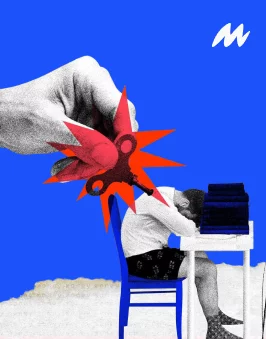
Turning IDEA25 into a revenue machine
Let’s be clear: IDEA® 2025 is not just a branding opportunity. It’s a high-intent, high-investment, high-return pipeline generator—but only if your team treats it as such. It’s easy to fall into the trap of just showing up with a slick booth and hoping the foot traffic converts. But hope is not a strategy.
What separates companies who walk away from IDEA® with leads versus those who walk away with deals? One thing: a full-funnel game plan that aligns your pre-event planning, in-event execution, and post-event follow-up into one seamless revenue engine.
Here’s how smart B2B teams are doing it.
Step 1: Build your pre-event funnel
Winning IDEA® starts weeks—if not months—before you hit the trade show floor. The most successful teams are laying the groundwork early:
- Segmenting prospect lists and reaching out to set appointments ahead of time
- Promoting specific demos or booth events with email + LinkedIn campaigns
- Using intent data to prioritize outreach to known high-fit accounts
- Creating custom content offers like: “The future of sustainable meltblown technology”
This kind of intentional pre-show engagement increases booth visit rates and sets the tone for smarter in-person conversations.
Step 2: Run your booth like a live CRM
During the show, your booth isn’t just a physical space—it’s a live lead capture and qualification machine. This is where traditional approaches fall short. Just smiling, scanning, and handing out brochures doesn’t cut it anymore. You need:
- Real-time lead scoring tools that prioritize the hottest conversations
- Content tracking to know exactly what interests each visitor
- A staff team trained not just to smile—but to tag, score, and route leads on the spot
- A booth experience that gives attendees something to interact with—not just something to look at
This approach turns your booth into a dynamic funnel entry point—not a branding island.
Step 3: Nail the follow-up before the show ends
You’ve heard it already, but it’s worth repeating: follow-up speed and specificity are everything. The best teams don’t wait until they’re back at HQ. They use automation to:
- Send personalized emails within hours of the visit
- Deliver microsites with booth content, assets, and a CTA
- Alert reps to high-interest activity for immediate outreach
- Segment leads into nurture vs. sales-ready paths based on real data
And because it’s all CRM-synced, your sales team isn’t starting from scratch—they’re picking up the conversation where the booth team left off.
Step 4: Measure what matters
After the event, it’s not about vanity metrics like “booth scans” or “how many flyers we gave out.” It’s about:
- Lead-to-meeting conversion rate
- Pipeline generated from the event
- Sales velocity post-event
- Content engagement rates
- Rep follow-up timing and response rates
Use these KPIs to optimize your strategy for the next event—and to show leadership exactly why IDEA® 2025 wasn’t just a cost center, but a revenue driver.
Step 5: Rinse, refine, repeat
Events like IDEA® aren’t one-and-done. They’re part of a longer B2B sales cycle, and your post-event strategy should reflect that. Keep the momentum going with:
- Monthly drip content based on what leads engaged with
- Social selling and retargeting campaigns for warm booth visitors
- Sales enablement content tied to event themes (e.g. regulatory updates, innovation awards, etc.)
- A final campaign to re-engage leads 30–45 days post-event with updated offers or industry insights
This ongoing motion keeps leads warm and moves them closer to the deal table, long after the carpet is pulled up and crates are packed.
The revenue engine playbook, summarized
| Funnel Stage | Key Action | Toolset Needed |
| Pre-Event | Targeted outreach + appointment setting | Email automation + CRM segmentation |
| During Event | Real-time capture + qualification | Lead scoring, content tracking tools |
| Post-Event (0–72h) | Personalized, fast follow-up | Automated emails + microsites |
| Post-Event (7–30d) | Nurture campaigns + sales engagement | CRM + marketing automation |
| Long-Term | Retargeting + re-engagement | ABM tools, content marketing strategy |
Key takeaway:
IDEA® 2025 isn’t just an expo—it’s a high-conversion moment in your revenue cycle. The companies that win will be the ones who treat it like the pipeline catalyst it truly is.
Conclusion: The future of nonwoven expos is data-driven, agile, and ROI-focused
IDEA® 2025 isn’t just a place to showcase new materials or admire booth design—it’s where the future of engineered fabrics is shaped. But shaping the future requires more than innovation in product lines. It demands innovation in how companies plan, execute, and measure their presence at events.
The days of relying on badge scans and generic follow-ups are done. Today’s decision-makers expect engagement that’s as smart, specific, and strategic as the technologies on display. That means:
- Real-time lead capture that doesn’t just collect names, but captures intent
- On-the-spot engagement tracking that helps your team prioritize the right people
- Personalized follow-ups that reach inboxes before the attendee leaves Miami Beach
- Tightly integrated CRM workflows that bridge sales and marketing instantly
- And most importantly, a repeatable, scalable strategy that transforms event spend into pipeline power
Events like IDEA® 2025 represent one of the most valuable moments in the industrial buying cycle. But the payoff only comes when exhibitors treat their booths as growth engines, not brand awareness checkboxes.
The good news? You don’t need a bigger budget—you just need a better plan. Smarter tools. Tighter alignment. And a team that’s equipped to act, not just react.
FAQs
- How soon should I follow up after IDEA® 2025?
- Within 24 hours—ideally within a few hours. The faster you follow up, the more likely you are to stand out and convert.
- What’s the best way to prioritize leads from a busy trade show?
- Use real-time lead scoring based on booth behavior, content interaction, and rep feedback to separate hot leads from casual visitors.
- Can lead capture tools integrate with Salesforce or HubSpot?
- Yes—platforms like momencio offer direct CRM integration to sync lead data, engagement history, and follow-up activity.
- How do I track which content booth visitors engage with?
- Use digital engagement tracking tools that log video views, document downloads, demo time, and microsite activity per lead.
- What metrics should I use to measure event ROI?
- Go beyond booth traffic—track lead-to-opportunity conversion rates, average sales velocity, engagement rates, and total influenced pipeline.
